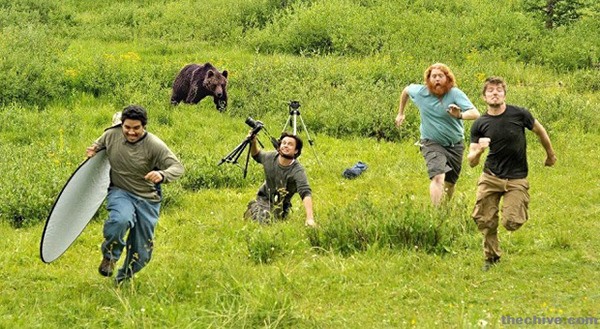It was February. Our breath hung in the air, a lifeless cloud exhaled from our warm lungs. All the trees looked dead, their decaying leaves frozen to the ground. The stream was solid ice and the stone walls of our cave were bitter as the inside of a freezer.
We came to live for a year in the wilds of southern Utah’s slickrock country, where ancient Anasazi once dwelt among these same canyons. Our daughter Sharlene was three years old and our son Eric was just a year. Later in life, when Eric explained to his friends how he learned to walk while living in a cave, he took some flak for making up such a story. But it was true.
The kids were too young to understand what was happening or to protest if they didn’t like the idea. My wife Becky was the real hero in our true-life adventure, supporting my desire to spend a year living in the wilderness in preparation for a career of writing about and teaching primitive living and outdoor survival. It was my job to keep us all alive during that year of isolated research.
This was no camping trip — it was a time to experience a more primitive lifestyle.
We took no sleeping bags, no tent, no camp stove, no lantern, no axe, no saw, no expedition gear. All we had were the clothes on our backs and none of that was anything special. We each had a wool blanket and Becky and I each took a knife. The rest we fabricated from what we found in nature — handmade traps, stone and bone tools, and such. Besides the caves, we lived in an abandoned mine shack. We built a wikiup and tested other expedient shelters.
We brought some food — wheat to grind between stones in ancient style, rice and a few other staples. Local ranchers and their wives who didn’t quite understand what we were up to took pity on us and provided some food as the year progressed.
Although we used every wild food resource, we gladly accepted their generosity.
We weren’t there just to see if we could find enough food to survive. We were there to live off the grid and have isolated time to research all that the region offered. It was a year of profound learning — not only about survival, but also about what’s important and what isn’t. It changed our lives forever.
In this column — “Guide to Staying Alive” — I’ll occasionally tell stories from our adventure in the wilderness.
But mostly, I’m going to explain how to survive when everything runs amok no matter where you are — in civilization or wilderness. Trust me, the day will come when things will run amok. Guaranteed.
Maybe it’ll happen during a simple day-hike when you turn around and nothing looks familiar. You realize that you’re lost.
Fear grows into panic and this is when things go to pot in a hurry.
Maybe it’ll be when an earthquake or a storm or an enemy destroys the grid long term. That’s when modem life ceases and you might as well be living 200 years ago.
Maybe it’ll be when economic collapse or the effect of a changing climate or a pandemic sweeps the country with resulting chaos, food and water shortages, or mass quarantine and epic death toll.
Read this column regularly, then get prepared for whatever may come. Because sure as the sun rises in the east, something is coming and you might as well know how to handle it when it does.
Sequim resident Rich Johnson is a former Special Forces survival expert and author of several books, including “The Ultimate Survival Manual,” and “Rich Johnson’s Guide To Wilderness Survival.” These and other books of his are available at Amazon. Reach him via e-mail at rhj@olypen.com.


